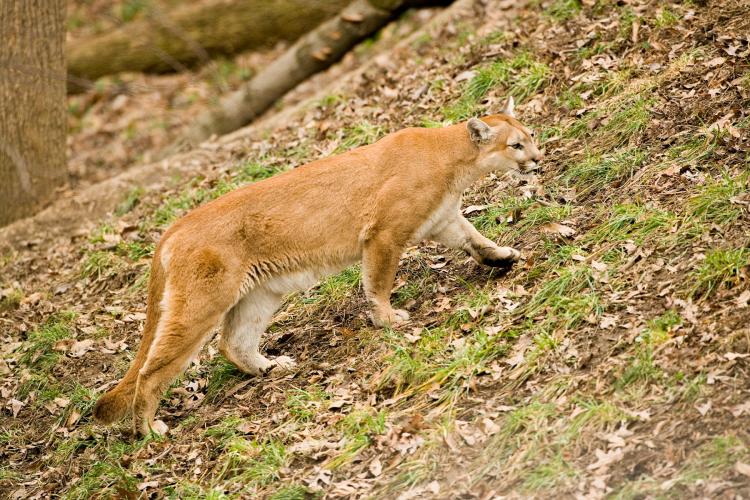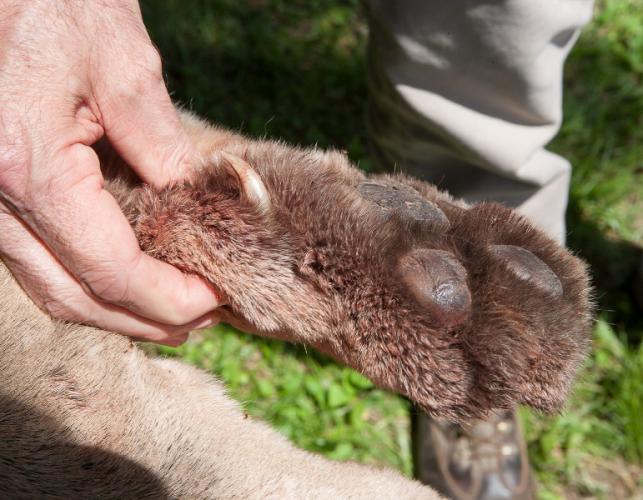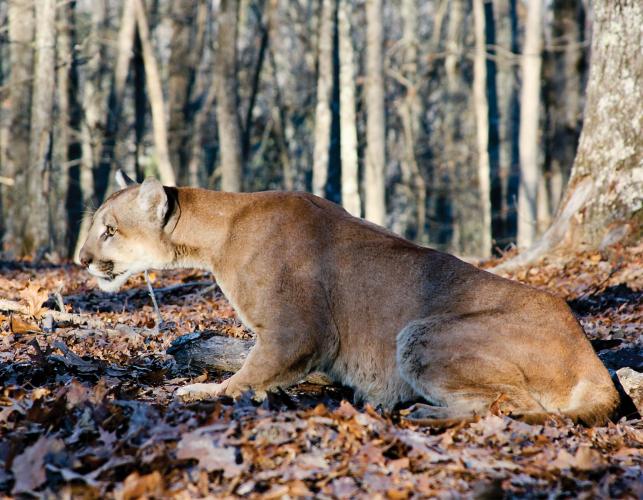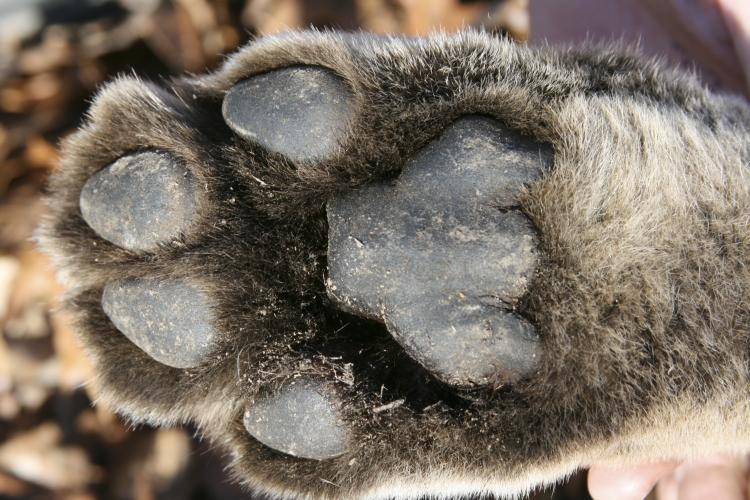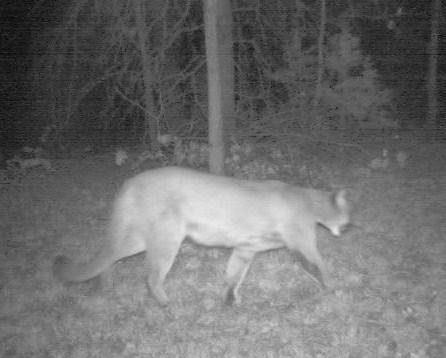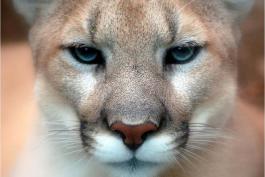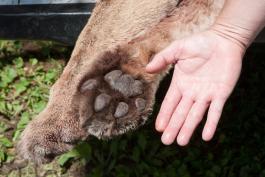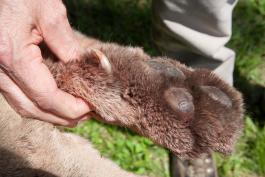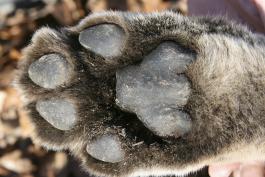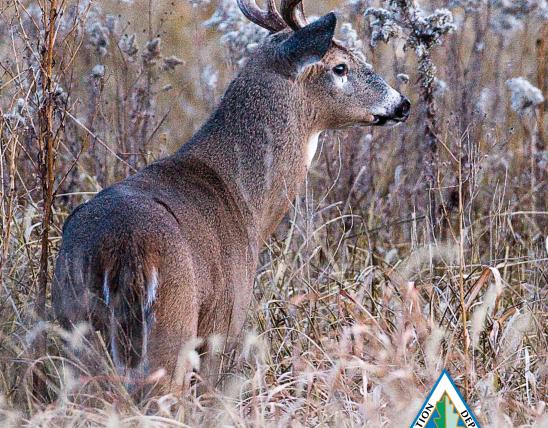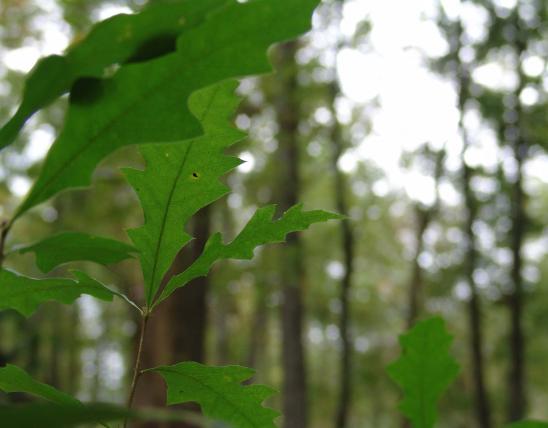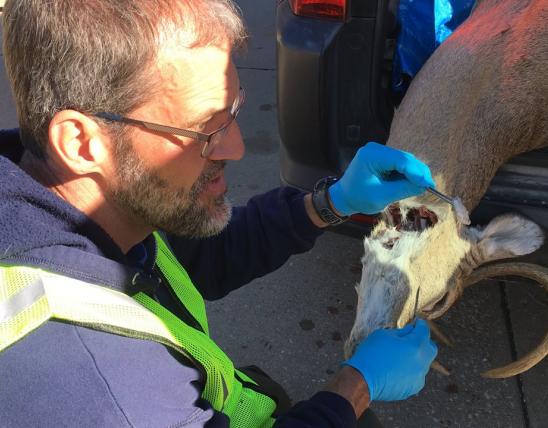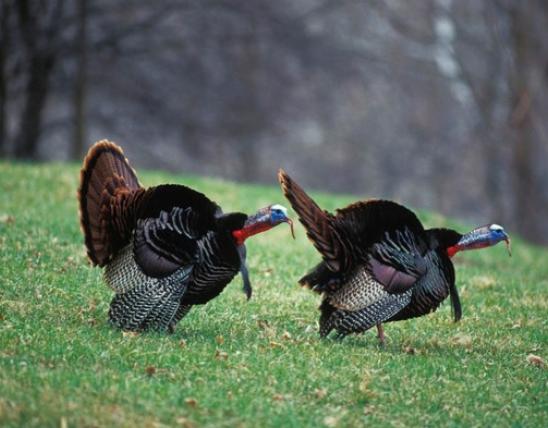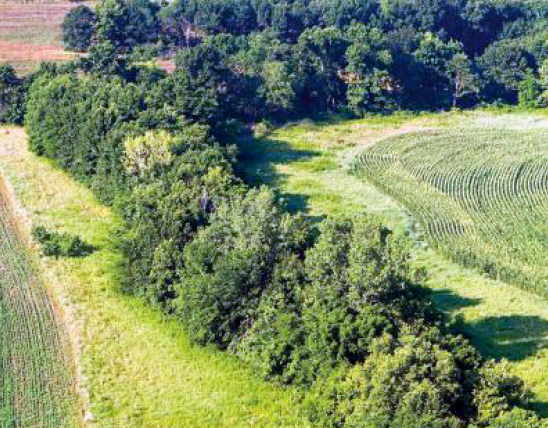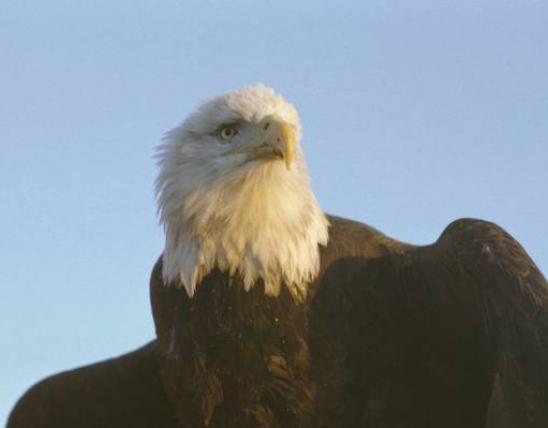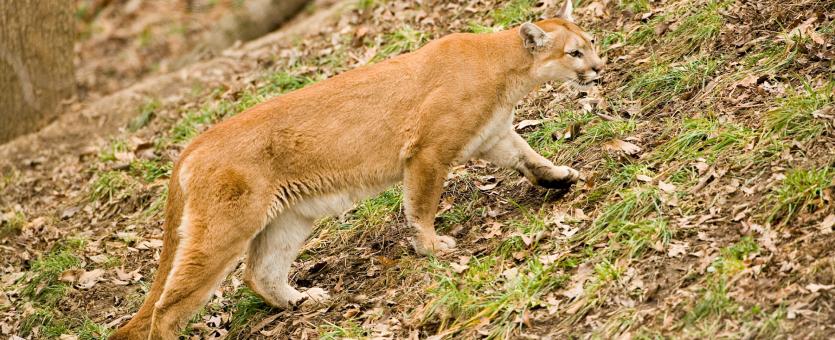
The mountain lion is a very large, slender cat with a small head, small rounded ears that are not tufted, very powerful shoulders and hindquarters, and a long, heavy, cylindrical tail. The coloration in adults is uniform. Upperparts are grizzled gray or dark brown to buff, cinnamon tawny, or rufous. Underparts are dull whitish overlaid with buff across the abdomen. The sides of the muzzle are black, and the chin and throat are white. The last two to three inches of the tail are black.
Similar species: Bobcats are smaller, with short tails, and the back and sides are yellowish to reddish brown streaked and spotted with black (not uniform in coloration).
Many mountain lion sightings in our state turn out to be cases of mistaken identity, but photos, tracks, hair, scat, and videos are some types of physical evidence used to confirm the presence of a mountain lion.
Total length: 5–8½ feet; tail length: 21–37½ inches; weight: 79–265 pounds (male), 64–141 pounds (female).
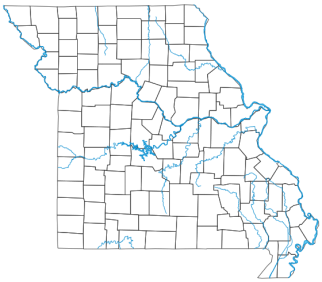
Officially extirpated, since there is no evidence of a breeding population, but there have been confirmed sightings scattered statewide, as far east as Lewis, Madison, Warren, Wayne, and St. Louis counties. View map of confirmed sightings.
Habitat and Conservation
Mountain lions prefer vegetative cover or rocky, rugged terrain, generally in areas of low human habitation. They have no special home; they merely seek shelter in rocky crevices, hollow trees or logs, holes in banks, or tall grass or underbrush. They are generally nocturnal but may be active during the day. They readily climb trees to obtain food or escape pursuit. The individuals found in Missouri are probably wanderers from states to the west of Missouri. They are occasionally hit by cars.
Food
Deer is a favorite food, but mountain lions also take smaller mammals including rabbits, beavers, opossums, raccoons, skunks, coyotes, other cougars, domestic cattle, and sheep. The take of deer is not wanton but related to their needs and the deer population. Mountain lions typically focus on prey individuals that are sick or already injured. One mountain lion may take about 35 deer a year.
Status
MDC has confirmed numerous mountain lions in Missouri since we began keeping records, averaging about 4 or 5 a year. Those animals apparently migrated here from western states. Young males typically leave their birth areas seeking territories of their own and often wander hundreds of miles. So far, MDC has no evidence of mountain lions establishing a breeding population within our state.
Life Cycle
It’s rare for a female to breed before 2½ and 3 years of age; thereafter she usually has young at 2-year intervals. Gestation lasts 90–96 days. Young can be born in any month, but the peak is in July. There are usually 2–3 kittens per litter. The kittens are buffy spotted with black. They begin accompanying their mother on hunting trips at about 2 months of age and often stay with her for 2 years. Young males often travel hundreds of miles as they disperse to find new territories.
Human Connections
There is little value for mountain lion fur, though some pelts are used for rugs or wall hangings. The meat is edible. Because this species is listed as extirpated in our state, mountain lions may only be killed if they are attacking livestock, domestic animals, or humans.
Ecosystem Connections
In pristine times, the mountain lion and other large carnivores served as a natural check on deer and other prey species. Today, humans control the deer herd, so the natural role of this big cat is gone. However, having this species as part of our natural fauna would add to our wealth of wildlife.
Signs and Tracks


Front and hind tracks:
- 3 inches long
- 4 toes
- Claws normally do not show
- Overall shape is round.
Other notes:
- The mountain lion is rare in Missouri, having been extirpated since the 1920s; occasional individuals wander here from other states.
- There are 3 lobes at the bottom of the heel pad. (Dogs and coyotes have a single indent at the bottom of their pads.)
- Each track is fairly asymmetrical. (Tracks of dogs and their relatives are symmetrical.)
- The toes are rather teardrop-shaped. (Dog and bobcat toes are oval.)
- Tracks are 2¾ to 3¾ inches wide. (Bobcat tracks are much smaller, less than 2 inches wide. Even six-month-old mountain lion kittens leave bigger tracks.)
- Distance between strides is 20 inches (walking).
- Claw marks usually are not present. (Dogs and coyotes usually leave claw marks. The claw marks left by dogs are blunt and flat. In the rare cases where mountain lions leave them, the claw marks are slender and sharp.)
- Tracks are like those of an enormous housecat.
